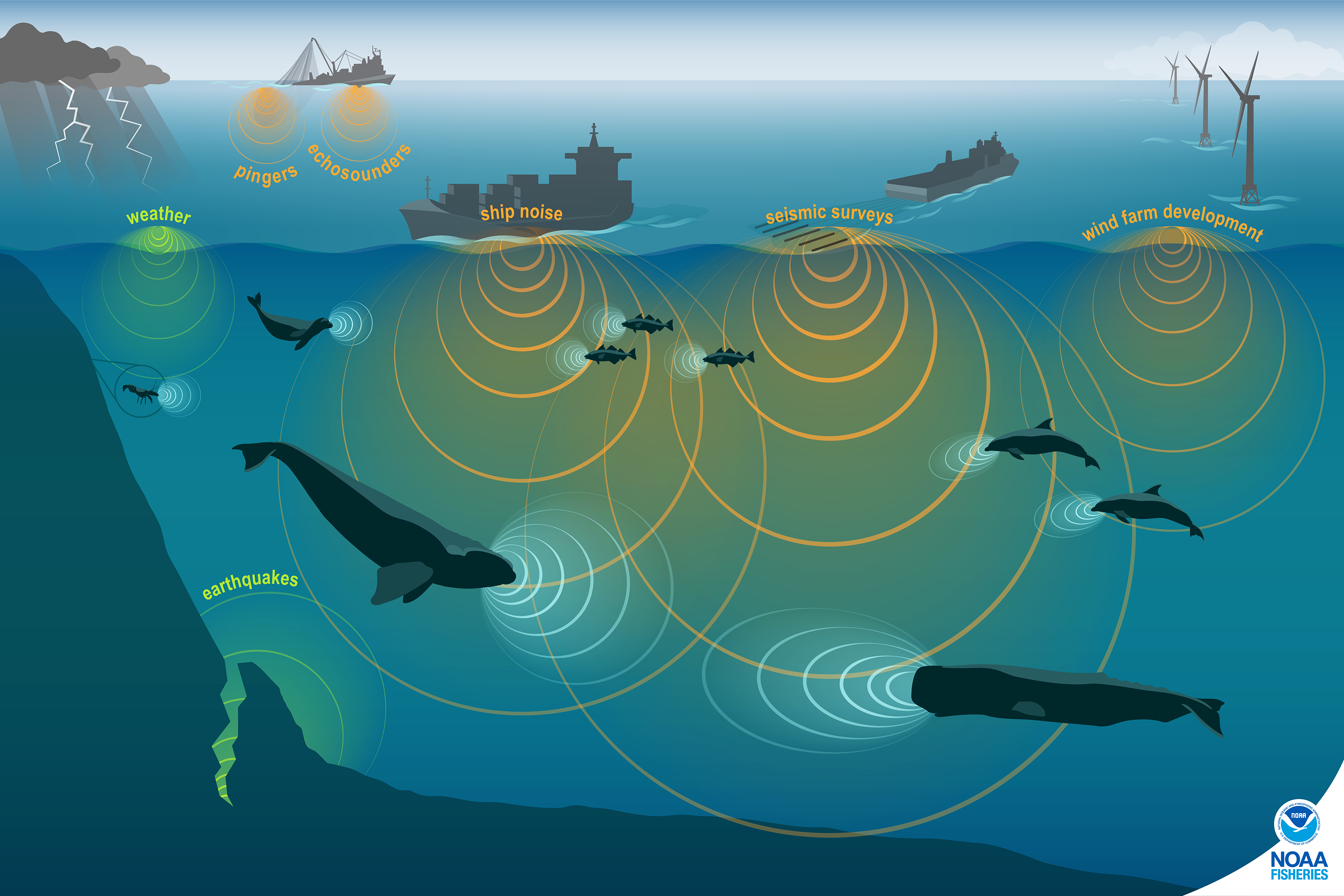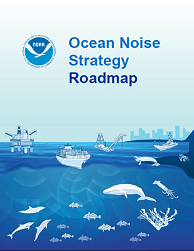Roadmap

In order to advance the Strategy’s goals, a cross-NOAA team of scientific experts, regulatory practitioners, managers, and lawyers who are knowledgeable in the field of ocean noise and represent multiple programs or authorities through which NOAA regulates, researches, or produces ocean noise. Participants identified the need for a Roadmap document to articulate the goals of the Strategy and to suggest approaches for achieving a more integrated and comprehensive understanding and management of ocean noise impacts.
The purpose of the NOAA Ocean Noise Strategy Roadmap is to support the agency’s use of its capabilities and authorities to more effectively understand and address the effects of noise on protected species and acoustic habitats. Four chapters address key elements of the Strategy’s approach and provide place-based examples:
Chapter 1: Reviewing species level impacts of ocean noise and associated management actions
Chapter 2: Establishing the foundation for understanding and managing acoustic habitats for NOAA trust species and places
Chapter 3: Reviewing NOAA’s current capability to characterize aquatic soundscapes and enhancing this capacity for the future
Chapter 4: Applying risk assessment to place-based examples that highlight Roadmap science and management recommendations
Implementation
NOAA has expertise distributed across multiple line offices and programs stationed across the country that is being used to better understand and mitigate ocean noise impacts. As directed by the Strategy’s implementation documents (Policy and Procedural Directives), work plans are drafted every to years to coordinate implementation across agency programs, and to focus collective efforts towards high priority activities.
Across the agency, programs engaged in implementing the Strategy contribute activities to the work plans and report on their progress. Activities are categorized according to their scope as flagship, national, regional, or sub-regional (e.g., within a division, branch, laboratory, or program). Strategy co-leads support NOAA programs in contributing to the work plan, and identify further opportunities for collaboration or synergy among activities. Here, we report on activity completed under the 2017-2021 work plans as well as current activities in 2023-2025.
- There were an average of 88 activities identified in the Strategy’s 2017, 2019, and 2021 work plans. Effort spanned all four of the Strategy’s goals and included collaboration across five NOAA line offices. The highest proportion of activities addressed science needs and were being conducted at the sub-regional scale. Simultaneously, four “flagship” activities were implemented that necessitated national coordination and partnership across line offices in order to address priority next steps identified in the Roadmap’s Executive Summary
- The Strategy’s current 2023 - 2025 work plan shows similar patterns of effort, but reflects, in part, a consolidation of activities with broader geographical scale, scope, and collaborations. Specifically, there were 78 activities submitted, with the highest effort towards science needs, and for the first time, national activities made up the highest proportion of activities.

Looking Forward
In 2026, the Ocean Noise Strategy will evaluate decadal progress towards its visionary goals for the agency’s efforts to better understand and manage ocean noise. Despite ongoing commitment to these goals, NOAA is not operating in isolation. The level and type of activity that the agency engages in is constantly changing to reflect new scientific findings and new priorities for resource protection. Work plans are designed to be responsive to these dynamics.

